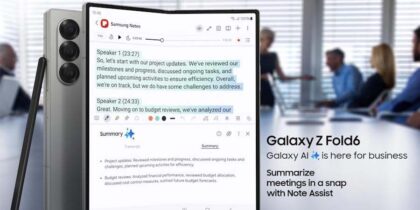While the current market for wearable devices is fairly small, experts predict tremendous growth in the very near future. In a 2015 article, Global Web Index estimates that just 9 percent of individuals use smart watches, while 7 percent have smart wristbands. However, according to a 2015 report from IDC, the worldwide market for wearable devices, especially enterprise wearables, will explode from 45.7 million units in 2015 to 126 million in 2019, a cumulative annual growth rate of 45 percent. Throughout the forecasted period, wrist-worn devices will constitute more than 80 percent of total sales.
Enterprise wearables have a bright future, and 2016 appears to be the tipping point. Going mobile will be a priority for decision makers worldwide, with the objectives of increasing the speed of business and allowing organizations to operate more efficiently.
Serving Workers With a Wide Array of Functions
According to Beecham Research, wearables in the workplace already have a wide array of uses. For example, in the financial sector, brokers can instantly access real-time news and trade data, which influences their decisions on the floor. In construction or utilities, field workers can read job-related updates such as hazard alerts, as well as compliance standards and reference guides, keeping them safe and up to code while on-site. The healthcare sector has been an early adopter of wearables; patients are often provided wearable devices that monitor their health around the clock, sending alerts in case of an emergency and reducing the time and frequency of doctor’s visits.
However, at this early stage, technology is still catching up to technical demand. In a recent white paper that discusses wearables in healthcare, Frost & Sullivan cautions that, when choosing a smart watch, organizations should pay close attention to what applications are currently available for it, as well as the device’s supported operating system. Eric McCarty, vice president of mobile product marketing at Samsung Business, points out that wearables are essentially an extension of a smartphone, and are therefore limited to the main device’s capabilities. Fortunately for wearables, organizations can customize the technology to meet their needs and give workers easy access to critical information. Samsung has partnered with some of the leading enterprise application developers, including Copper Mobile Custom Development, to help mobile adopters develop custom software solutions according to their organizational needs.
Meeting the Demands of Other Industries
At present, most wearable vendors are primarily focusing on smartwatches. But this is changing as new innovations reach the market. Examples include Samsung Gear Circle for audio applications in conjunction with Bluetooth and Samsung Gear VR. Virtual reality headsets have a wide range of business applications, such as aviation simulation for pilot training and home tours in real estate.
As the enterprise wearables market grows, devices could be adapted for a wider range of scenarios in industries such as oil and gas, manufacturing, distribution and logistics, retailing, construction and law enforcement. Appeal will increase as organizations realize their use in cutting costs and improving quality. Especially in environments where safety concerns or logistics limit traditional technologies, wearables will prevail over smartphones and tablets. A maintenance engineer could access technical information when working in a confined space, all without needing to open a separate device or leave the work area. Similarly, wearables allow for data access when hazardous environments require safety equipment. This saves time and allows workers to make decisions faster and more efficiently.
While the wearables market is young and focused on consumer applications, devices hold enormous potential in enterprise settings. Organizations are looking for ways to make decisions faster, conduct business more efficiently, and lower their overall costs. Following the early adopters, acceptance of enterprise wearables is likely to accelerate over coming years.
Want to learn more about integrating wearables into your enterprise? Read the white paper.








